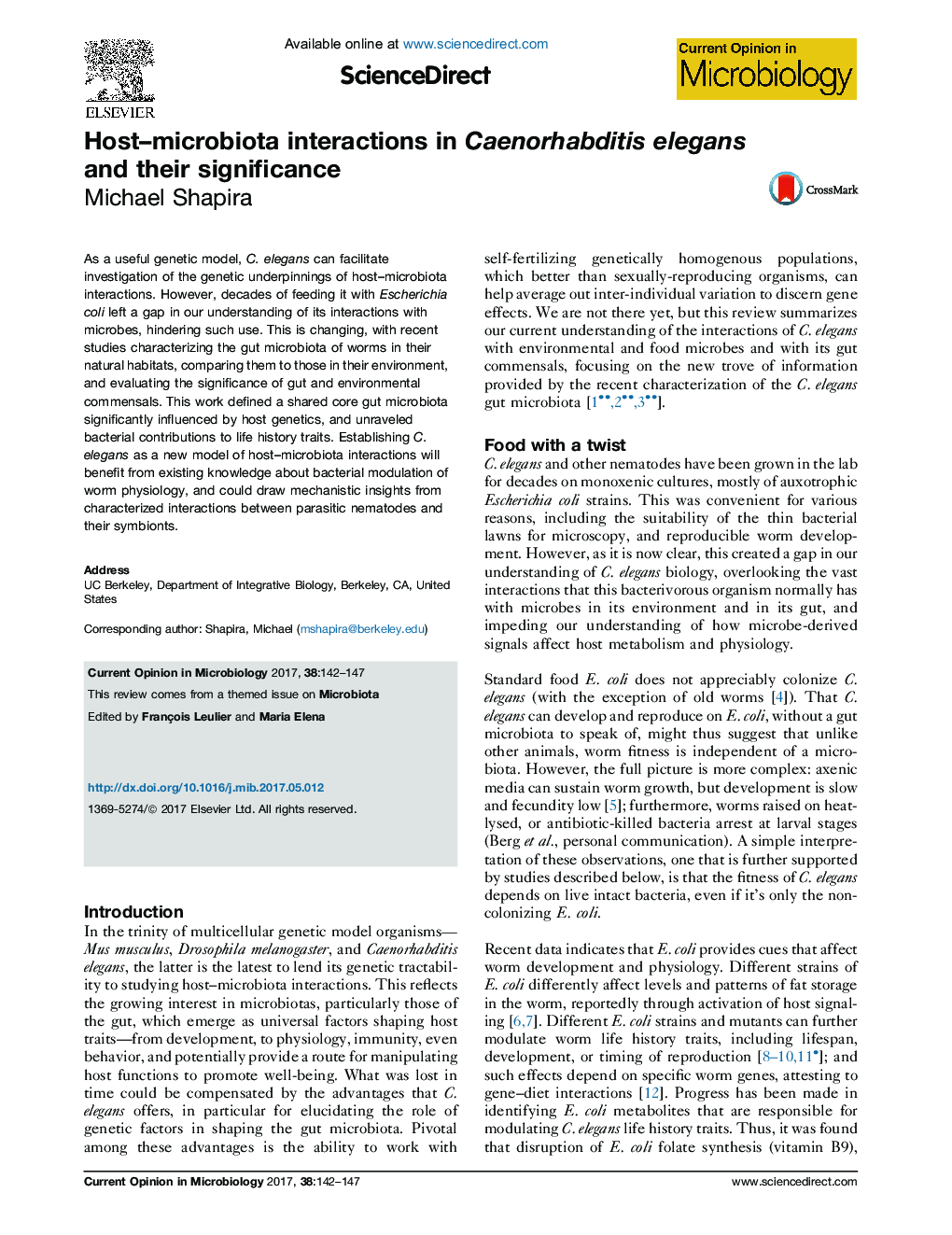| Article ID | Journal | Published Year | Pages | File Type |
|---|---|---|---|---|
| 5671705 | Current Opinion in Microbiology | 2017 | 6 Pages |
â¢Work with food bacteria demonstrates that bacterial signals modulate C. elegans physiology and life history traits.â¢In the wild, proliferation of C. elegans populations in different habitats is dependent on local microbial diversity.â¢Worms grown in diverse environments reproducibly assemble a characteristic gut microbiota.â¢Environmental availability dictates microbiota composition, but host genetics plays a significant role in shaping it.â¢Worm commensals contribute synergistically to development, reproduction and immunity.
As a useful genetic model, C. elegans can facilitate investigation of the genetic underpinnings of host-microbiota interactions. However, decades of feeding it with Escherichia coli left a gap in our understanding of its interactions with microbes, hindering such use. This is changing, with recent studies characterizing the gut microbiota of worms in their natural habitats, comparing them to those in their environment, and evaluating the significance of gut and environmental commensals. This work defined a shared core gut microbiota significantly influenced by host genetics, and unraveled bacterial contributions to life history traits. Establishing C. elegans as a new model of host-microbiota interactions will benefit from existing knowledge about bacterial modulation of worm physiology, and could draw mechanistic insights from characterized interactions between parasitic nematodes and their symbionts.
